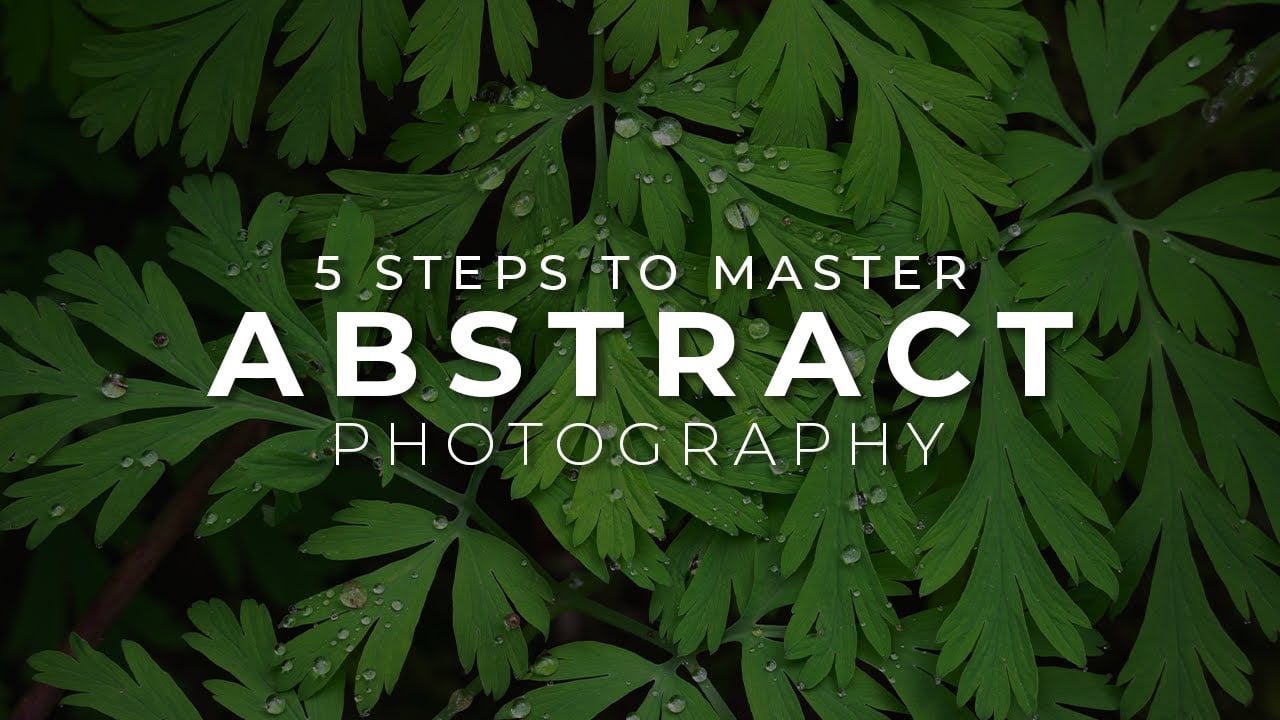
Have you ever paused to marvel at the intricate details hidden in plain sight? The sunlight filtering through tree branches to create a web of patterns or the jagged lines on a cracked rock that seem to tell a silent story? Abstract photography is not just about taking pictures—it’s about seeing the world differently. It’s about focusing on shapes, colours, and textures to tell a story or evoke emotion.
In this video Jalen Oban dives into this creative and expressive genre. Here are his tips to help you elevate your skills in abstract photography.
What is Abstract Photography?
Abstract photography is about simplifying the scene and focusing on the visual instead of the literal. Instead of photographing a tree, zoom in on the rough texture of its bark. Rather than a mountain, isolate the jagged peaks cutting through the sky. Abstracts invite curiosity and challenge viewers to see the world in a new way.
The best thing is that abstract photography doesn’t require exotic locations or expensive equipment. It thrives on your ability to notice patterns, light, and textures—often hidden in everyday surroundings.
Choosing the Right Lens
The best gear for abstract photography helps you capture the details that inspire you. Here are some lens recommendations and how to use them creatively:
- Wide-Angle Lenses (e.g., 16-35mm)
Perfect for capturing environmental abstracts like ripples in sand or cracks in rocks. The wide field of view helps showcase expansive scenes while highlighting intricate details. Get up close and fill the frame to make your subject dominate the composition. - Telephoto Lenses (e.g., 100-400mm)
These lenses compress the background and foreground, emphasizing textures and patterns. Use them to zoom in on ridge lines, rolling hills, or fine details in a distant scene. - Mid-Range Zooms (e.g., 70-200mm)
A versatile option for capturing both tight details and broader context. Great for waves crashing on rocks or patterns in rolling fields.
Remember, it’s not about having the most expensive gear—it’s about using the tools you have to isolate and amplify the extraordinary. I’d also throw in a lens with macro caperbilities into my bag, close ups can yield very interesting and beautiful results, creating entire new worlds and perspectives.
Finding Patterns
Patterns are the lifeblood of abstract photography. Repeating shapes, lines, and textures naturally draw the eye and create a sense of order. Here’s how to find and capture them:
- Train Your Vision
Start by observing your surroundings more closely. Look for repeating patterns in nature, like rows of trees, ripples in water, or the texture of bark. - Disrupt the Pattern
To create intrigue, include a single element that breaks the repetition—like a lone leaf floating on a patterned pond or a solitary jagged peak amidst a mountain range. - Experiment with Framing
Try different angles, depths of field, and compositions to see how they change the mood of your image. Sometimes, the simplest adjustments can turn an ordinary pattern into a compelling piece of art.
Find the Best Light
If patterns are the foundation of abstract photography, light is its soul. The way light interacts with your subject can transform an ordinary scene into something magical.
- Golden Hour
Early morning and late evening light is soft and directional, perfect for highlighting textures and adding depth. Shadows become longer and more pronounced, helping to carve out the contours of your subject. - Harsh Light
Midday light, often avoided by photographers, can create striking abstract images with bold shadows and high contrast. Use it to your advantage for dramatic silhouettes or graphic compositions. - Chasing the Light
Observe how light moves across a scene. It might mean waiting patiently for the perfect moment or moving quickly to capture fleeting highlights. Experiment with how light can evoke different emotions—warm tones feel inviting, while cooler tones can create a sense of mystery.
Telling a Story
Abstract photography is like solving a puzzle. By combining elements like lens choice, patterns, and light, you can craft images that tell a story or create a mood. Here are some final tips:
- Slow Down and Observe
Great abstracts aren’t rushed. Take your time to let patterns and light reveal themselves. - Create Collections
Think beyond single images. Build a series of abstracts from the same scene to create a cohesive mood or narrative. - Embrace Imperfection
Not every shot will be a masterpiece, and that’s okay. The more you practice, the better you’ll become at seeing and capturing the extraordinary.
One final point I’d make is to practise and keep practising. The first few times you go out and try to shoot abstracts could easily be disappointing. However, keep looking at other photographer’s work for inspiration and before too long you’ll end up with something perfect for printing out. Abstracts make great wall art and if that’s something you’re interested in doing this could be a fun way to expand your portfolio.

